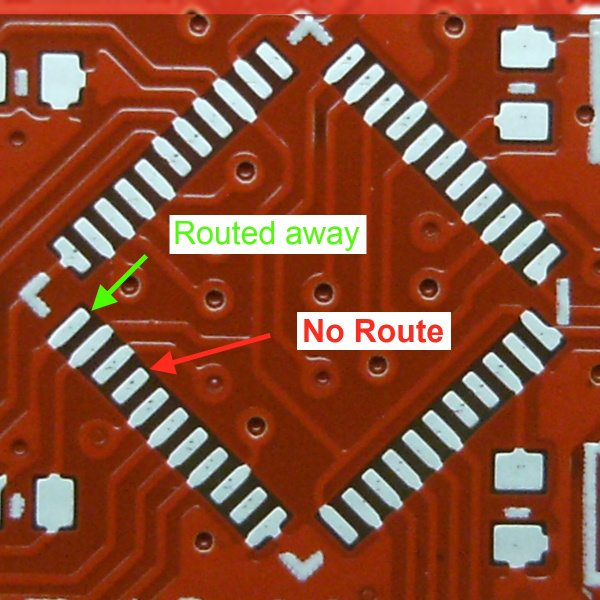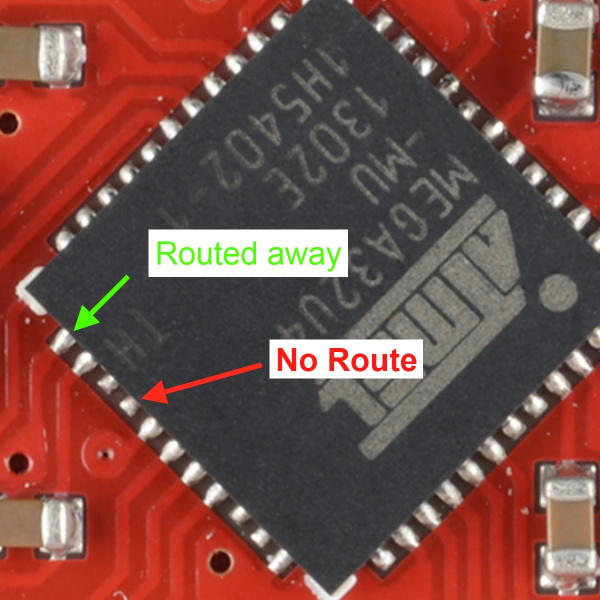Constant Innovation in Quality Control
Routing Away and Fake Traces
As mentioned in the previous section, we're starting to do a lot more design revisions to help with reflow. One very recent development is the idea of "fake traces". When you route away from an IC (especially small pitched QFN), the route job acctually affects the pad size/shape and ultimately the reflow and fillet formation. Due to the oversized tstop (aka mask cutout) on a PCB, the pad size is actually extended a tiny bit in the direction of the trace. Here is an example:
Pictured above is a bare pcb of the Pro Micro. You can see that some of the pads have been routed away from the IC, some have been routed underneath and some pads do not have any routing at all. This slight difference affects the way the solder flows.
Above is a picture of a populated board. Now let us look a little closer at the left side of the IC.
Notice how the size and shape of the fillet is different for each pad. The pads with the traces routed away look the best! Another added benefit is that the AOI now has almost twice the amount of solder to inspect.
In addition to ensuring that all traces route directly away from the IC, we are also approaching this problem from the library level. In Eagle 6, you can now create complex pad shapes. This means that we can add an extra bit of top copper (in the case below, it is a simple line drawn with the wire tool), and Eagle recognizes the extra copper as part of the pad. In this way, the wire is acting like a fake trace! In the example below, we have modified the pads on a QFN-44 package to include some extra fake traces.
- One thing to keep in mind while doing this: the wire must start on exactly the same X-Y coordinates as the center point of the pad. This is important because it will ensure you do not run into a DRC (design rule check) errors for every pad.
The beauty of this approach is that even if one of the pads is not routed (i.e. its not needed in the design or its a no-connect), it will still have the same shape and padsize-to-paste ratio. The routing direction is now built into the part at the library level - wahoo!!



